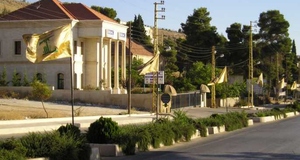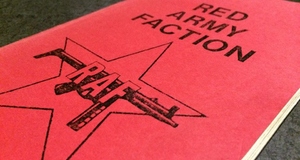From Clocks and Clouds VOL. 6 NO. 2Terrorist Divorce: Examining Alliance Break-Ups and the Al Qaeda/ISIL SplitFindingsHaving examined the background of al-Qaeda and AQI/ISI/ISIL's relationship as well as considered the case in terms of the four determinants – strategic cohesion, need fulfillment, trust, and communication – the question remains, what caused the al-Qaeda/ISIL split? During the first era of the AQC/ AQI relationship from 2003-2006, there was a lack of grand strategic cohesion and not a great deal of trust. However, the groups did fulfill one another's needs insofar as al-Qaeda was able to remain relevant by having a presence in one of the most important jihadi theaters, and Zarqawi gained legitimacy through the al-Qaeda brand. During the second era, however – after the relative lull from 20062010 during Abu Omar al Baghdadi and Abu Hamza al Muhajir's tenure – Abu Bakr al Baghdadi emerged as a brutal Zarqawi-esque leader and the nature of the relationship changed. The groups still had little strategic cohesion, even lower levels of trust and communication, and had lost the ability and willingness to fulfill one another's needs. While Zarqawi did disobey Zawahiri and deviate from al-Qaeda's grand strategy during the course of his leadership, the alliance did – for a time – fulfill the needs that had been significant enough to warrant an alliance in the first place. Thus, I posit that the first era of the alliance was a success, or at least successful enough to determine that it was worth continuing. Trust and communication facilitated this need fulfillment in that AQC could, for the most part, trust Zarqawi to maintain an al-Qaeda presence and not make too many severe mistakes. When he did make such mistakes, in general, al-Qaeda's core leadership was able to communicate with him. Their lack of strategic cohesion, while sometimes simply unhelpful to enabling a relationship, was at other times a major source of conflict, and put strain on the relationship for the entirety of its existence. The second era, on the other hand, saw a decrease in both trust and communication as counterterrorism pressure remained high, Osama bin Laden was killed, and new leadership took over both organizations. Additionally, ISI's autonomy and subsequent ability to operate independently from AQC allowed it to pursue its own agenda. This agenda was at odds with al-Qaeda's own needs, and the fulfillment that had existed previously finally broke down. AQI and later ISI had already gained the legitimacy, recruitment, and funding that it needed from al-Qaeda core, yet AQC still required a solid and positive brand presence within Iraq. Once Baghdadi reinvigorated Zarqawi's brutal tactics, the al-Qaeda brand became tarnished and its AQC's needs were no longer being fulfilled. Thus – given that terrorist organizations will never gain optimal levels of trust and communication and must take what they can get in these categories – need fulfillment appears to be the most important determinant of success within an alliance. This category proved to exhibit the most significant change over the course of the relationship, and, once it was lost, significantly invalidated any reasons for maintaining the alliance. Once Baghdadi announced the takeover of Jabhat al Nusra and the creation of the caliphate under the Islamic State of Iraq and the Levant, ISIL served no further purpose and only created more problems for al-Qaeda. Baghdadi's outright disobedience of Zawahiri's decrees was the nail in the coffin, and in early 2014, the alliance's fate was sealed. Counterterrorism Implications And Further ResearchStudying the nature of terrorist alliances and alliance break-ups provides counterterrorism practitioners with a greater arsenal for dismantling these organizations. This study advocates for essentially the same counterterrorism measures as the alliance literature does, yet from a different angle. Scholars of terrorist alliances encourage the use of counterterrorism measures that induce a poor alliance, in the hopes that that will result in divorce. However, by studying the way groups split, we can more directly and efficiently disrupt these alliances and degrade alliances' strength. Byman argues that by using information operations, counterterror measures can "magnify...integration problems and, if done well, can further induce friction, discredit the brand, and otherwise throw sand in the gears" (Byman 2014, 431). Bacon echoes this sentiment, and advocates for drawing attention to allies' failures and alienation of constituents in order to exacerbate any tension within the alliance (Bacon 2014). Additionally, rather than focusing on the upper echelons of terrorist leadership, she points out that "[c]ounterterrorism efforts should also target figures within alliance hubs who manage, facilitate, and encourage alliances" given that these mid-level operatives are the ones with the most influence over the success or failure of the alliance (Bacon 2014). Bacon explains that counterterror measures need not be reinvented with increased understanding of alliances, however they must be more "focused and enhanced…against hubs as well as [utilize] well-timed interventions" (Bacon 2014). As this study found that need fulfillment proved to be the most important component keeping the al-Qaeda/ISIL relationship afloat, counterterrorism policies and actions should seek to disrupt this aspect of alliances. In order to do this, as Bacon and Byman discuss, it is incumbent upon counterterrorism practitioners to disrupt a group's ability or willingness to provide its ally with something it needs. If two organizations are allied primarily so one organization can traffic weapons to the other, the focus of that counter-alliance operation should be shutting down the smuggling routes used to obtain such arms. On the other hand, if a group's primary function is to provide another group safe-haven, that counter-alliance operation would be most effective if it put pressure on the haven-provider so that it becomes untenable to harbor the haven-seeker. As the scholars discuss, this is not a radical new counterterrorism strategy; CT and other security practitioners already seek to disrupt arms smuggling routes and destroy terrorist safe-havens. Rather, focusing on the specific determinants keeping an alliance alive and shifting resources towards that determinant will destroy terrorist alliances in a direct, efficient, and targeted manner. An additional track for future research involves the two previously mentioned subcategories within the four determinants: conflict instigators – strategic cohesion and need fulfillment – and conflict managers – trust and communication. While outside the scope of this study, future studies should examine the different roles that these two sets of determinants play, and whether those roles change their importance vis-à-vis causes of divorce. ConclusionThe case of al-Qaeda and the Islamic State of Iraq and the Levant provides unique insight into terrorist divorce and the broader discussion of terrorist alliances. In examining the existing literature on such partnerships, as well as considering several external subjects such as business and organizational studies as well as romantic relationships, I have argued here that four main determinants will be contribute to the success or failure of an terrorist alliance. Those determinants are the level of strategic cohesion between the groups; the ability and willingness of the groups to fulfill one another's needs; the level of trust that the groups, and particularly the leaders, have with one another; and the level of communication the groups are able to maintain. By considering these determinants from a theoretical perspective, as well as using them as the lens through which to assess the case study of the al-Qaeda/ISIL split, we can develop a greater understanding of what keeps these alliances alive and what will prove to be a death sentence. For al-Qaeda and ISIL, the groups' ability and willingness to fulfill one another's needs – previously relatively strong during the bin Laden/Zarqawi era – was decimated by 2014, and the concurrent degradation of trust and communication put the alliance in no position to deal with such a major problem. Thus, the al Nusra announcement served as the culmination of years of issues with need fulfillment, and the groups dissolved their alliance. Considering this case, terrorist divorces, and terrorist alliances in general provides security practitioners a better understanding of how these groups, and the partnerships they create, function. Such an understanding is crucial for developing effective and efficient counterterrorism policy and operations. The more we study these issues, the better chance we have for dealing with the complex and persistent threat of terrorism. AuthorVivian G. Hagerty is a student of Homeland and National Security Studies. She graduates in May of 2016. School of International Service (SIS), American University Email: hagerty.vivian@gmail.com Referencesal Zawahiri, Ayman. 2005. "ZAWAHIRI'S LETTER TO ZARQAWI (ENGLISH TRANSLATION)." Asal, Victor H., Hyun Hee Park, R. Karl Rethemeyer, and Gary Ackerman. 2015. "With Friends Like These…Why Terrorist Organizations Ally." International Public Management Journal 0 (0): 1–30. doi:10.1080/10967494.2015.1027431. Bacon, Tricia. Forthcoming. Mergers, Acquisitions, and Mayhem: Understanding Why Terrorist Groups Ally. Philadelphia: University of Pennsylvania Press. ———. 2014. "Alliance Hubs: Focal Points in the International Terrorist Landscape." Perspectives on Terrorism 8 (4). bin Ladin, Usama. 2011. "SOCOM-2012-0000010." Combatting Terrorism Center at West Point. Byman, Daniel. 2014. "Buddies or Burdens? Understanding the Al-Qaeda Relationship with Its Affiliate Organizations." Security Studies 23 (3): 431–70. Gadahn, Adam. 2011. "SOCOM-2012-0000004." Combatting Terrorism Center at West Point. Kale, Prashant, and Harbir Singh. 2009. "Managing Strategic Alliances: What Do We Know Now, and Where Do We Go from Here?" Academy of Management Perspectives 23 (3): 45– 62. McCants, William Faizi. 2015. The ISIS Apocalypse: The History, Strategy, and Doomsday Vision of the Islamic State. First edition. New York: St. Martin's Press. Moghadam, Assaf. 2015. "TERRORIST AFFILIATIONS IN CONTEXT: A TYPOLOGY OF TERRORIST INTER-GROUP COOPERATION." Combatting Terrorism Center at West Point, March. Peng, Mike W., and Oded Shenkar. 2002. "Joint Venture Dissolution as Corporate Divorce." The Academy of Management Executive (1993-2005) 16 (2): 92–105. "SOCOM-2012-0000014." 2007. Combatting Terrorism Center at West Point. Stern, Jessica, and J. M. Berger. 2015. ISIS: The State of Terror. First edition. New York, N.Y: Ecco Press, an imprint of HarperCollins Publishers. Svarer, Michael. 2003. "Determinants of Divorce in Denmark." SSRN Scholarly Paper ID 360960. Rochester, NY: Social Science Research Network. Thomasson, Oscar, and Audrius Janusonis. 2012. "Managing a Demerger ProcessA Case Study of a Corporate Divorce," July. Warrick, Joby. 2015. Black Flags: The Rise of ISIS. First edition. New York: Doubleday. Weaver, Mary Anne. 2006. "The Short, Violent Life of Abu Musab Al-Zarqawi The Atlantic." July/ August. Weiss, Michael, and Ḥassan Ḥassan. Isis: Inside the Army of Terror. First Regan Arts paperback edition. New York, NY: Regan Arts, 2015. Suggested Reading from Inquiries Journal
Inquiries Journal provides undergraduate and graduate students around the world a platform for the wide dissemination of academic work over a range of core disciplines. Representing the work of students from hundreds of institutions around the globe, Inquiries Journal's large database of academic articles is completely free. Learn more | Blog | Submit Latest in International Affairs |




















